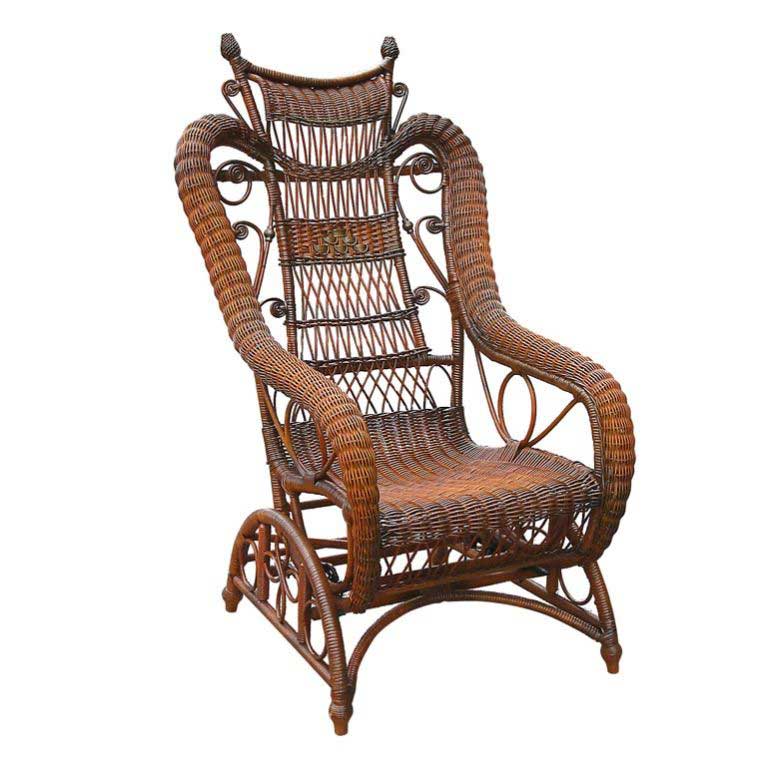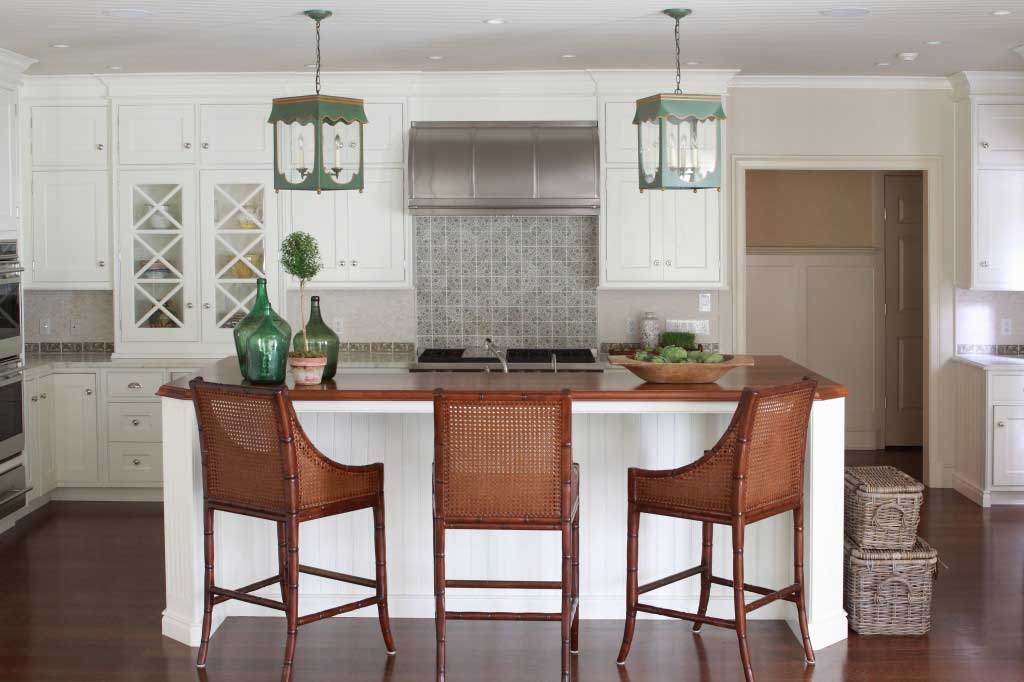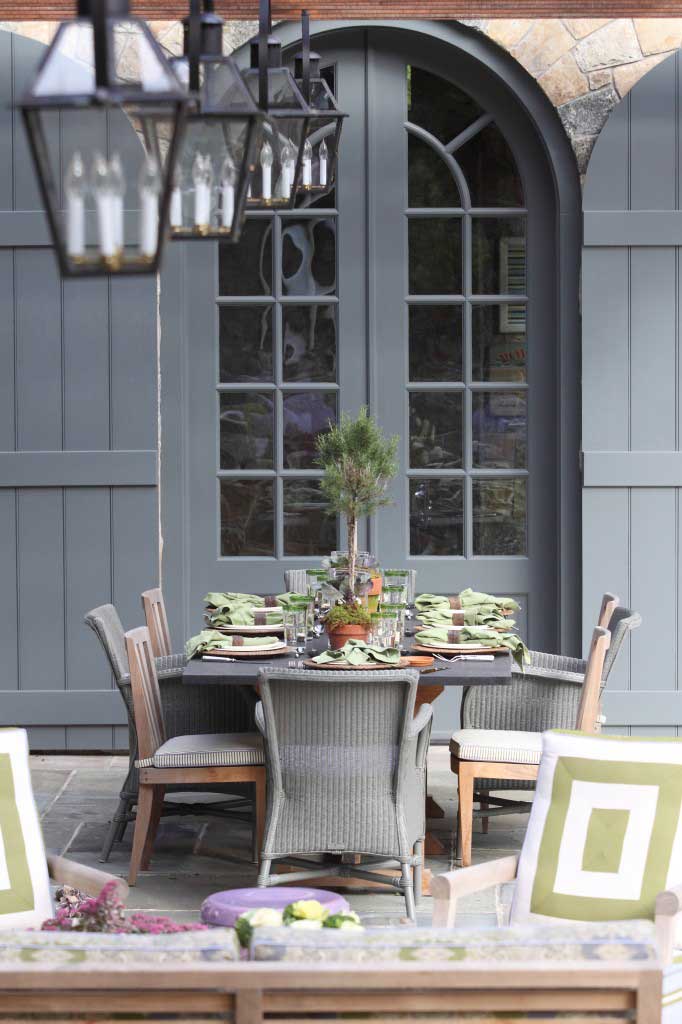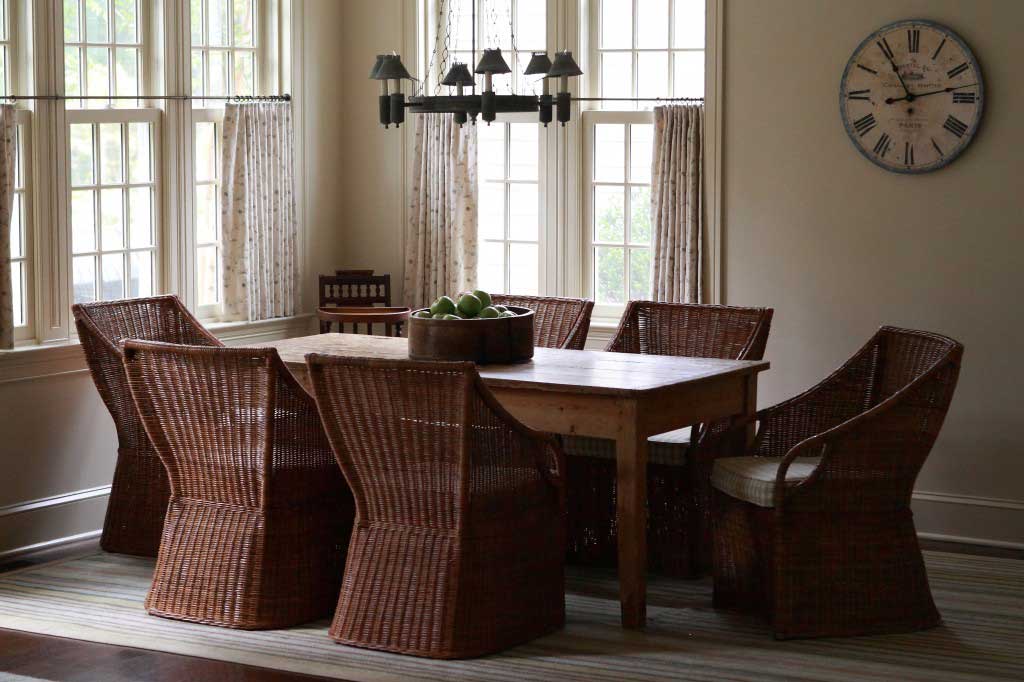Wicker furniture has been around since the days of the ancient Egyptians. Natural wicker, formed of cane or rattan core stalks, willow switches, reed, or bamboo, is known for its strength, durability, beauty, and comfort. Synthetic wicker may be easier to maintain over time, but it cannot compete with natural wicker’s many superior qualities.
After the U.S. Civil War, wicker furniture enjoyed modest popularity as a comfortable, lightweight option for outdoor seating. Toward the end of the 19th Century, wicker furniture makers had developed an elaborate Victorian style. The height of these ornate wicker designs was reached in the late 1880s and early 1890s until styling became more austere during the Arts and Crafts movement. Collectors today highly prize antique wicker pieces.


I like the unusual, eclectic look of these wicker chairs. This style isn’t what typically comes to mind when you think of wicker chairs and I find the styling details unexpected and very interesting. Indoors or out, wicker brings natural charm to a room. It works with upholstered pieces and relaxes a room with polished wood features.



